Data backup is crucial to businesses and individuals since it could be the last defense against data loss. By creating a copy of the system or files to another location, the original data can be restored once it gets corrupted, deleted, or lost.
Besides, to enhance data security, consider using a backup strategy that can decrease the risk of partial or full data loss. It offers the ability to restore the system, files, and apps to the previously desired state in case of unexpected accidents, such as cyberattacks, hardware failures, natural disasters, etc.
Importantly, as data volumes grow, adopting effective backup techniques is important. This guide takes a closer look at full vs incremental vs differential backups, explaining how they work, pros and cons, and which is the best choice in different situations. It also introduces some top backup software and best practices to help you protect data.
Overview of Backup
What Is Backup
A backup is the process of making a copy of important files, the operating system, or the whole hard drive. This makes sure that the data can be protected and restored to the earlier state.
You should know that everyone had better have a habit of backing up a computer. A backup offers an extra layer of protection against various risks and reduces the loss to an extreme.
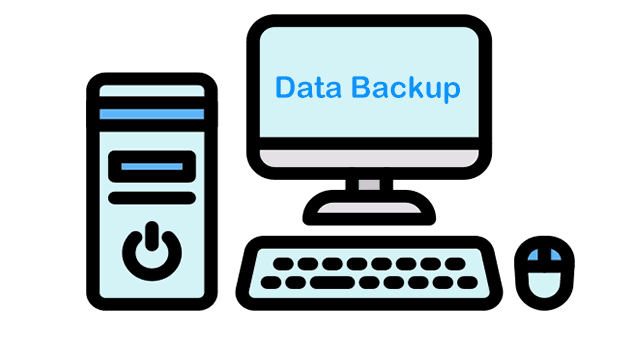
- Human errors: You accidentally delete a necessary file from your computer. Moreover, some mistakes you make cause computer crashes. Besides, liquids spill on the laptop keyboard & soak into the internal parts, etc.
- Cyberattacks: Viruses, malware, and other threats invade the system, resulting in encrypted or deleted files, information leaks, and more.
- Hardware failures: The hard drive could get damaged due to improper operations, overheating, power failure, firmware corruption, and more.
- Software issues: A software malfunction or crash is another main reason for data loss. For example, a file editing software failure leads to files failing to save, antivirus software mistakenly reads a file as malware, etc.
- Natural disasters: Common disasters include earthquakes, hurricanes, natural fires, floods, and lightning. Although the occurrence rate is lower, data loss is immeasurable.
- Theft: Data loss happens after a laptop is stolen. Usually, laptops are stolen at an alarming rate as they are portable and easy to take out.
In response to these situations, the best practice for data security should be backup.
Common Backup Storage Media
Where do you save your backups? Ideally, you should keep your backup copies of files, systems, partitions, or the entire hard drive in a secure location. The place should be separate from your computer, such as an external hard drive stored offsite or a cloud-based service.
That way, the backup will still be intact once the computer is lost, stolen, or broken. Besides, this avoids access to data via the network location and further damage.
Depending on your needs, we list some common storage media for backups:
#1. External hard drives
They are portable and can be hard drives (HDDs) and solid-state drives (SSDs). HDDs come with a high capacity to store a multitude of backup copies and have a relatively low cost. SSDs, on the other hand, use flash memory to store data, featuring superior speed, durability, and reliability.
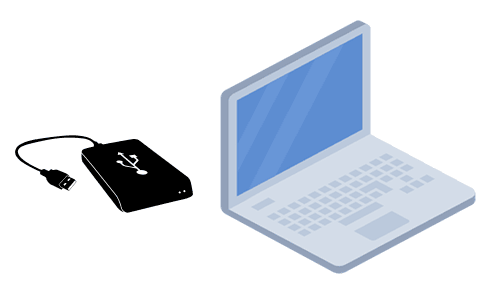
For more details about these two disk types, click the guide on SSD vs HDD.
Backing up the PC to an external hard drive is ideal for a few reasons.
- It prevents data loss because of computer accidents.
- You can take it anywhere due to its portability.
- The cost is comparatively low.
Moreover, thumb drives and memory sticks are widely used external devices.
#2. Cloud
Like any storage device, external hard drives could malfunction. But cloud-based services like OneDrive, Google Drive, Dropbox, etc. don’t have such a situation. It stores data on its remote servers via internet-based services, allowing you to access data from any device and anywhere.

However, you need to subscribe to services to enjoy unlimited capacity. Moreover, this could expose your data to potential breaches and losses. So, please use a reputable cloud platform.
#3. Optical Discs
Optical discs such as CDs and DVDs are one of the oldest modes of backup solutions. However, they are rarely in use in the industry. They have limited capacity, making them convenient for small-scale and portable backup. In addition, they feature poor performance and are prone to physical damage such as scratches and cracks.

#4. Tape Drives
Tap drives are also the old backup destinations, which are ideal for long-term archival and offline backup. They require special hardware and software. Currently, few people use them.
To sum up, in today’s age, external hard disks and cloud-based services are the popular choices. The combination of them brings an additional layer of protection against data loss.
Data Backup Types
As for the data backup types, they depend on the category you divide.
Backup Types Classified by Data Types
Depending on what you back up, backup types include video backup, movie backup, document backup, photo backup, app backup, email backup, message/SMS backup, system backup, etc.
Backup Types Classified by Data Carriages
If you back up different forms of data, the backup name is different. Generally, you may hear of partition/volume backup, disk backup, file backup, folder backup, server backup, phone backup, NAS backup, TV backup, game console backup, cloud backup, and so on.
Backup Types Based on How You Perform the Backup
When searching for backup types in Google Chrome, they commonly refer to full backup, incremental backup, and differential backup. These 3 backup types are carried out in different ways, keeping your data safe.
Below, we focus on how these 3 backup types work, their pros and cons, details on full vs incremental vs differential backup, and more. Then, you can identify which one to use in different situations.
Full Backup
What Is a Full Backup
A full backup refers to the process of creating one or more complete copies of all data in another location. Usually, you’d better use an external hard drive to store backups. Before the full backup, you need to specify the data for backup, such as files and folders.
Files will be backed up into a single version (an image file) during the full backup process. The image file contains all the source files, although the image size varies due to the source size.
A full backup saves all files or folders. Compared to other backup types, it is the best data protection option in terms of recovery speed, simplicity, and convenience.
Always creating full backups may be ideal as they are comprehensive. However, you need to spend an amount of time, which prevents you from running full backups often. It is not a practical approach to rely on daily full backups. Usually, full backups are performed on a weekly or monthly basis.
An Example of a Full Backup
Let’s see an example to help you learn how a full backup works.
Source: You have 100 photos on your computer. Every day (from the next day), you add 100 photos to the source folder.
Day 1: You have 100 photos.
Day 2: There are 200 photos.
Day 3: Your computer contains 300 photos.
Day 4: You have 400 photos.
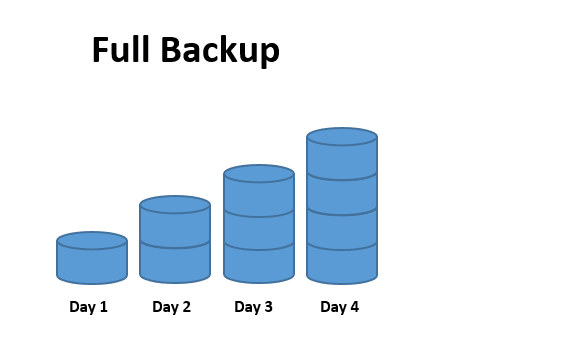
Result: Now, there are 4 image files on your PC, containing 1000 photos. Among them, 600 photos are the same.
Restore Full Backup: To restore your data, you only need the fourth full backup (day 4) to get 400 pictures.
Pros of Full Backup
Among full, incremental, and differential backups, many individuals and businesses use the full backup method to protect vital data. This is mainly because it has advantages, as follows.
- It is easy to understand and implement. You can create a separate backup each time.
- A full backup enables you to find and delete the old versions, and then create a new one.
- A full backup is easy to restore as you only need the latest backup copy.
- When restoring all the data in case of unexpected accidents, a full backup is very useful as it contains an intact and exact data copy.
Cons of Full Backup
Even though the full backup offers you good data security, every coin has two sides. This backup method also exposes its faults:
- Full backups create copies of all the data, requiring a large amount of storage space and time, especially for large datasets.
- In full backups, there will be a lot of redundant and unnecessary data if changes between backups are minor. This wastes many resources.
- As the saying goes, “Don’t put all your eggs in one basket”. If full backups are damaged, then you will lose all the data.
- Full backups cause higher storage costs.
Applicable Scenes
Full backups are performed for the entire system or a specific data set, and they are complete, without omission. Here are several applicable scenes:
#1. System Initial Installation and Deployment: Before installing a new system, make sure to make a full backup of the original system. That way, you can quickly restore the OS to the initial state if something goes wrong.
#2. Regular Backup for Important Data: For financial data, customer information, research and development data, and other key data, you should create full backups. Back up that data on a fixed cycle, such as every week or every month. This ensures that data can be restored to its most recent complete state in case of loss or corruption.
#3. Preparatory Work Before Major Changes: Perform a full backup before a major software upgrade, hardware replacement, or change to your system configuration. Then, you can roll back the system to the previous status if a compatibility issue or other faults occur.

#4. Data Center Migration: When moving data from one data center to another, you need to perform a full backup and restore data in the new center. This ensures complete data transfer and prevents data loss or damage during the migration process.
Incremental Backup
In this full guide on full vs incremental vs differential backup, you have learned about full backup. Now let’s explore the incremental backup to know its principle, cons, pros, and applicable situations.
What Is Incremental Backup
An incremental backup is a common backup strategy. It only copies data that has changed or newly created since the preceding backup activity was made, whether it is a full or incremental backup. This backup form only identifies, records, and preserves those changed files. So, it makes changes typically low, resulting in reduced storage requirements and backup time.
For businesses that generate vast amounts of data on a daily basis, this approach is most efficient. This is mainly because only the modified or newly added data needs to be backed up.
How often should you make incremental backups? The frequency depends on your needs. Some of you choose to implement them daily, while some do them several times a day or every hour.
Often, you find details about full backup vs incremental backup and look for the typical method as an alternative. No new data loss happens if you combine full and incremental backup methods.
Example of Incremental Backup
To know what incremental backups are, here is an example to help you.
On Sunday, you make a full backup, and then the incremental backup on Monday includes changes since Sunday. Tuesday’s incremental backup only consists of new files or changed data since Monday. The process of incremental backups will continue until you make a new full backup.
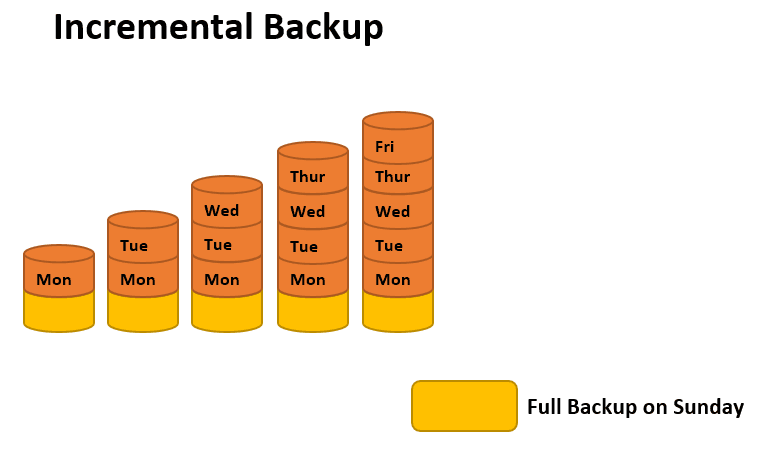
Pros of Incremental Backup
As for securely archiving data and files, an incremental backup is a basic technique. The following are its primary pros:
- It takes less backup time, making it the fastest backup type. This type only backs up every file that has changed since the last full or incremental backup.
- Compared to full backups, incremental backups require the smallest storage space to save image files.
- When transferring data online, incremental backups use less bandwidth as less data needs to be moved.
Cons of Incremental Backup
In making data backups, an incremental backup offers much greater flexibility. However, it is not as fully featured as you want. You had better keep a few things in mind:
- To restore data, you need to restore the full backup and all subsequent incremental backups. The restoration process takes longer than restoring from a single full backup.
- The restoration process is more complex, as you must restore multiple backups in the correct order.
- Restoration can’t be completed if any one of the incremental backups is missing.
Applicable Scenes
The following are four scenario classifications.
#1. Data Is Frequently Updated
Database and systems that change in real time, such as E-commerce platforms, personal documents & pictures, etc., need to be kept updated. Creating incremental backups for the latest data changes is ideal. The method can reduce the amount of data to be backed up each time and shorten the backup time.
#2. Storage Space Is Limited
For small and medium-sized enterprises with large data but limited budgets, storage costs need to be controlled. Besides, incremental backups apply to personal users who have limited storage space. Only backing up changes in data reduces the storage footprint.
#3. Version History Management Is Required
In terms of software development, the codebase and configuration file of the test environment keep updated every day. In the design industry, there are many modifications of PSD and AI files by designers. With incremental backups, all versions are retained for easy recall.
Differential Backup
From the tutorial on full vs incremental vs differential backup, you have learned the information on full and incremental backups. Next, pay attention to differential backup.
What Is Differential Backup
A differential backup saves only the difference in the data since the last full backup. This means the initial full backup includes all the data, while subsequent differential backups only capture modifications.
Unlike incremental backups, differential backups repeatedly compare the current data with the last full backup. This backup approach preserves unaltered data and also avoids unnecessary data duplication. You won’t waste precious storage space or spend more time on backups.
Over time, differential backups accumulate changes. The recovery process becomes simple as you only need the most recent full backup and the latest differential backup. However, the differential backups can grow to a size that is larger than the full backup if performed too many times.
How a Differential Backup Works
As stated above, differential backups store all modifications since the last full backup. Starting with a full backup, differential backups use it for comparison when performing subsequent backups. From the example below, you will understand much.
On Sunday, you do a full backup.
On Monday, you only back up data that has changed since Sunday.
On Tuesday, only changed data since Sunday (including changes on Monday) is backed up, and so on until the next full backup.
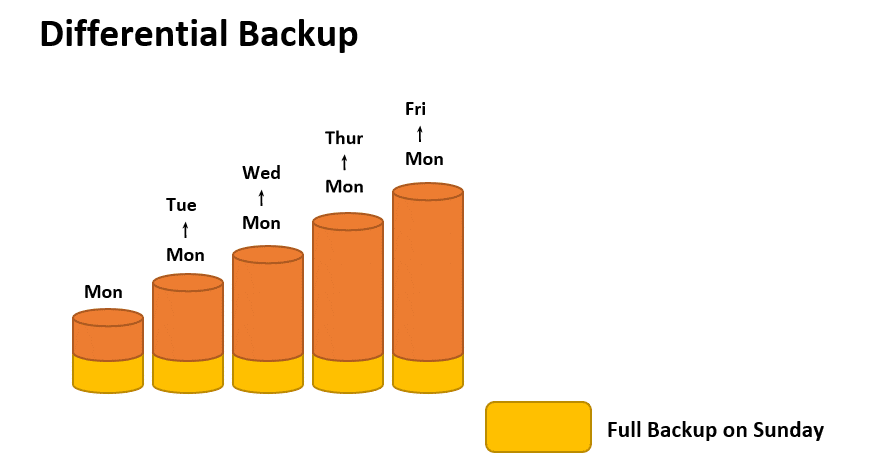
Pros of Differential Backup
When it comes to full backup vs differential backup vs incremental backup, you can find that differential backups have several pros.
- A differential backup costs less time than a full backup. It is created on the basis of the last full backup.
- Compared to a full backup, a differential backup needs less storage space. It won’t copy all the data.
- In restoring data, you only need the first full backup and the last differential backup. It is simpler than an incremental backup.
Cons of Differential Backup
A differential backup also has some cons, as follows.
- It takes longer to make differential backups than incremental backups since they back up more data.
- Differential backups include all the changes since the last full backup, using more space than incremental backups.
- The restoration time is long.
Applicable Scenes
Through the deep analysis of the differential backup, we find several scenarios where this method is particularly effective.
#1. Critical Services That Require Fast Data Recovery
Financial trading systems, medical information systems, etc. require fast data recovery. Differential backups significantly shorten the recovery time and reduce losses due to server interruption.
#2. An Environment with a Steady Rate of Data Change
As for low-frequency updated data such as archival files, history records, and more, consider differential backups. The amount of data in each differential backup is small.
#3. Cases in Specific Industries
In the financial industry, the high-frequency trading system needs to be quickly rolled back to a specific time point after a failure. Differential backups reduce recovery steps to ensure business continuity.
Patient diagnosis and treatment records also require real-time updates and fast recovery. To reduce the clinical decision risk due to data loss, perform differential backups.
Full Backup vs Incremental Backup vs Differential Backup
Generally, incremental backups and differential backups aim to speed up backups and optimize disk space compared to full backups. They are not the same, although they are a form of cumulative backup. So, what’s the difference between incremental and differential backup?
Let’s deeply explore incremental vs differential backup below. Also, you will know the info on incremental vs full backup and differential vs full backup.
Backup Principle
A full backup makes a complete copy of all specified data, including system files, applications, and user data. Each backup is independent and complete.
Both the incremental and differential backup only back up data that has changed. The former is based on the last backup, which can be a full backup or an incremental backup. It records the state of the data after each backup, and only the changed data is backed up in the next backup.
But the latter is based on the last full backup. Every time you carry out a differential backup, all data changes since the last full backup are checked and backed up.
| Full Backup | Incremental Backup | Differential Backup | |
| How It Works | Copy all data each time | Full backup + all changes since the last backup | Full backup + all changes since the last full backup |
Backup Speed
In terms of backup speed, namely backup time, a full backup is the slowest because it needs to copy all the data.
The backup time of an incremental backup is relatively short. This is because it only backs up a small amount of changed data. But the backup speed of a differential backup ranks second.
However, there are exceptions in terms of “differential vs incremental backup in backup speed”. If the changed or new data is more than the data in the initial full backup, both incremental and differential backups take more time. If you don’t delete any data from the original backup and only add a few new files, these two backup methods take a similar time.
In short, incremental backups are faster than differential backups in other situations.
| Full Backup | Incremental Backup | Differential Backup | |
| Backup Speed | Slow | Fast | Between full backup and incremental backup |
Recovery Speed
Full backup: This method offers fast recovery speed. It only requires the most recent full backup, without relying on other backups.
Incremental backup: It has a more time-consuming and complex recovery process. You need to start with the latest full backup and then apply subsequent incremental backups in sequence. When handling many incremental backups, the process can be lengthy.

Differential backup: Compared to an incremental backup, this type simplifies the recovery process, making the speed faster. Complete data recovery requires the last full backup and the most recent differential backup. With fewer steps, it can be a quicker and more straightforward option.
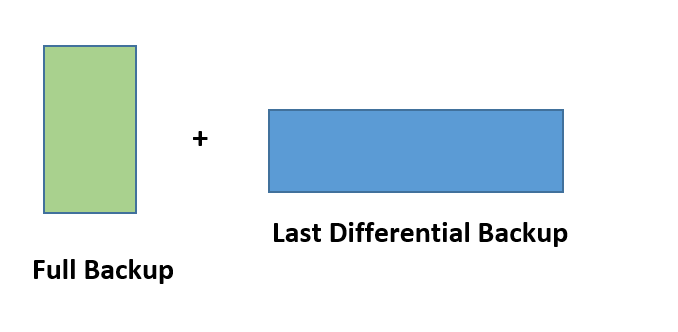
Here is a form about “full vs differential vs incremental backup in restoration speed”:
| Full Backup | Incremental Backup | Differential Backup | |
| Recovery Speed | Fastest | Slowest | Faster |
Storage Space Use
Among these three backups, a full backup uses the most storage space as it backs up all the data. When it comes to “incremental backup vs differential backup in space”, the incremental backup wins. In detail, the size of each incremental backup is relatively small. For environments with limited storage capacity, this approach can be ideal.
In the beginning, differential backups use less space. Over time, they grow larger because each backup includes all changes since the last full backup. As a result, more and more space is taken, especially when making frequent and substantial changes.
| Full Backup | Incremental Backup | Differential Backup | |
| Storage Consumption | High | Low | Medium to High |
Applicable Scenes
Full backup: You should make a full backup before applying a new system & a major system update. For an initial backup of vital data, a full backup is essential.
Incremental backup: It is suitable for scenarios where data changes frequently and resources are limited.
Differential backup: It is ideal for specific industries that have high demands for recovery speed, without relying on multiple backup files.
Implementation Cost
When talking about “full backup vs incremental backup vs differential backup in cost”, it mainly depends on the storage space. In general, full backups need more storage space, resulting in the highest cost.
By contrast, incremental backups are the most cost-efficient. As cumulative differential backups use more space over time, they get costlier.
| Full Backup | Incremental Backup | Differential Backup | |
| Cost | Highest | Low | High |
Impact on System Performance
In addition to the above aspects, let’s focus on “full vs incremental vs differential backup in influence on the system”.
Full backups: A large amount of data needs to be copied. They may have extensive effects on system performance, especially when frequently making read and write operations to storage devices.
Incremental backups: Usually, they have a minimal impact because of their smaller size and faster execution. They won’t significantly affect system resources if you schedule them frequently.
Differential backups: They can take longer to complete. As they grow larger, the strain on system resources turns greater.
| Full Backup | Incremental Backup | Differential Backup | |
| Impact on System | Highest | Low | High |
That’s all key differences between incremental and differential backups. Understanding them helps decide which type aligns better with your backup speed & recovery time requirements, storage capabilities, etc. Then, you can pick the most effective approach to guarantee data protection and business continuity.
Choose the Best Backup Strategy
To ensure data safety and efficient recovery, selecting the appropriate backup strategy is essential. Please consider these best practices to maximize the effectiveness of a backup strategy.
Option 1: 3-2-1 Backup Rule
The 3-2-1 backup strategy is a widely accepted data protection method, aiming to ensure data security and recoverability. Let’s view some key points.
3 Copies
This rule states that you should always have three copies of data, including the source data and two backups. That way, even if one copy is corrupted or lost, there are still other backups available. It avoids permanent data loss due to a single point of failure such as hardware damage, accidental deletion, etc.
2 Different Storage Media
The rule requires you to use at least two different types of storage media to save backups. The purpose is to prevent all backups on the same media from losing or failing at the same time.
Physical media: Hard drives, USB flash drives, and so on.
Virtual media: Cloud storage services and Network Attached Storage (NAS).
1 Offsite Copy
Make sure you keep one backup offsite to respond to natural disasters like earthquakes, fires, etc. Like this, there won’t be a devastating impact on the data.
Option 2: Hybrid Backup Scheme
From the part of “full vs incremental vs differential backup”, you may be inspired to make a hybrid backup strategy. It combines full backups, incremental backups, and differential backups. In balancing backup efficiency, storage space use, and data recovery speed, this scheme works wonders.
Let’s explore the key features.
Weekly Full Backup
Every week, make a full backup of all the computer data to ensure faster restoration time. Moreover, this provides more regular independent recovery points to enhance data protection.
Daily Incremental Backup
Consider performing an incremental backup every day. It features fast backup speed, less storage space, and low resource consumption.
Monthly Differential Backup
Every month, create a differential backup for changed data since the last full backup to gain fast recovery speed.
Let’s see a special example to help you understand.

Every Monday: full backups
From Tuesday to Sunday: incremental backups
Every last day: differential backups
If data is lost after the backup is finished on the fifth Sunday, use these backups:
A full backup (27th) + a differential backup (31th) + incremental backups (1st,2nd).
Option 3: Enterprise Backup Strategy
A backup strategy for enterprises is not just saving backup copies. It involves how you back up your data, how often backups should be created, and where to save backups. Here are the best backup practices.
Follow the 3-2-1 Rule
This means keeping 3 copies, placing 2 copies on two differential media, and keeping one copy offsite. Multiple layers of protection significantly reduce the risk of data loss or corruption.
In addition to this rule, some enterprises follow the 3-2-1-1-0 rule. You may wonder what the extra “1-0” means. The additional 1 indicates storing one copy offline and 0 means testing backups with 0 errors. Learn more from the guide on the 3-2-1-1-0 backup rule.
Pair Backups with a DR Plan
A backup strategy is vital but it is only part of the plan. Make sure to combine a data backup plan with a comprehensive disaster recovery plan. Once data gets lost unexpectedly, you can take measures to recover it beyond backups. The backup disaster recovery plan could minimize downtime and keep your business running smoothly.
Automate Your Backups
Setting up automated backups can ensure backups remain consistent, reducing human errors. Please determine the backup frequency as per your needs. Usually, schedule the backups during off-peak times to minimize impact on your network.
Option 4: Manual Backup and Automatic Backup
Manual backup: It allows you to control your data protection. To be specific, you can decide what to backup, when to backup, and where to save the backups. The control level is ideal when dealing with sensitive data or performing small-scale operations. This approach is a cost-effective option for businesses and individuals with limited data.
However, manual backups require consistent effort and time, and data loss easily occurs due to forgetfulness or human error.
Automatic Backup: This makes up for the deficiency of manual backups. Backups will automatically happen at the scheduled time, reducing the risk of human error. Although automatic backups bring convenience and reliability, they have a high price.
To sum up, a hybrid approach combining manual and automatic backups is a smart choice. Use automated backups for routine data protection and manual backups for specific files or critical data. Then, you will gain flexibility and convenience.
Backup Tools
Now you understand these three common backup types, including the details of full vs incremental vs differential backup, and backup strategies. Next, you should consider which backup tool is the best choice to achieve your purposes.
Common Backup Software
As we have discussed, full backups, incremental backups, and differential backups enhance data protection. To implement these backups, seek help from backup tools. In the software market, there are many such programs for you to choose from. Which one to use? The third-party PC backup software, MiniTool ShadowMaker stands out due to its rich features.
Highlights of this tool:
- Compatible with Windows 11/10/8/7 and Windows Server 2022/2019/2016, and more.
- Supports storage devices from almost all manufacturers, including SSDs, HDDs, external hard drives, USB flash drives, SD cards, etc. Make sure Disk Management can recognize them.
- Backs up the PC to an external hard disk, USB flash drive, NAS, etc.
- Supports various kinds of backup sources, for instance, system backup, file backup, folder backup, partition backup, and disk backup.
- Allows you to back up the PC even though Windows fails to boot.
- Has a feature called Media Builder, enabling you to create a bootable USB hard drive, USB flash drive, or CD/DVD. By the media, you can boot the PC and perform a recovery.
- Restores the system backup to a computer with dissimilar hardware via Universal Restore.
- Helps create full backups, differential backups & incremental backups, as well as automatic backups.
- Features folder/file sync, cloning HDD to SSD, and cloning SSD to larger SSD.
Next, let’s see how to use this backup software to back up your PC.
Step 1: Download and install MiniTool ShadowMaker on your computer.
MiniTool ShadowMaker TrialClick to Download100%Clean & Safe
Step 2: Connect a USB drive or external hard drive to the machine. Launch this backup utility and click Keep Trial to proceed.
Step 3: On the Backup page, you notice that MiniTool ShadowMaker backs up the system by default. For system backup, click DESTINATION to choose the USB or external drive to save backup files.
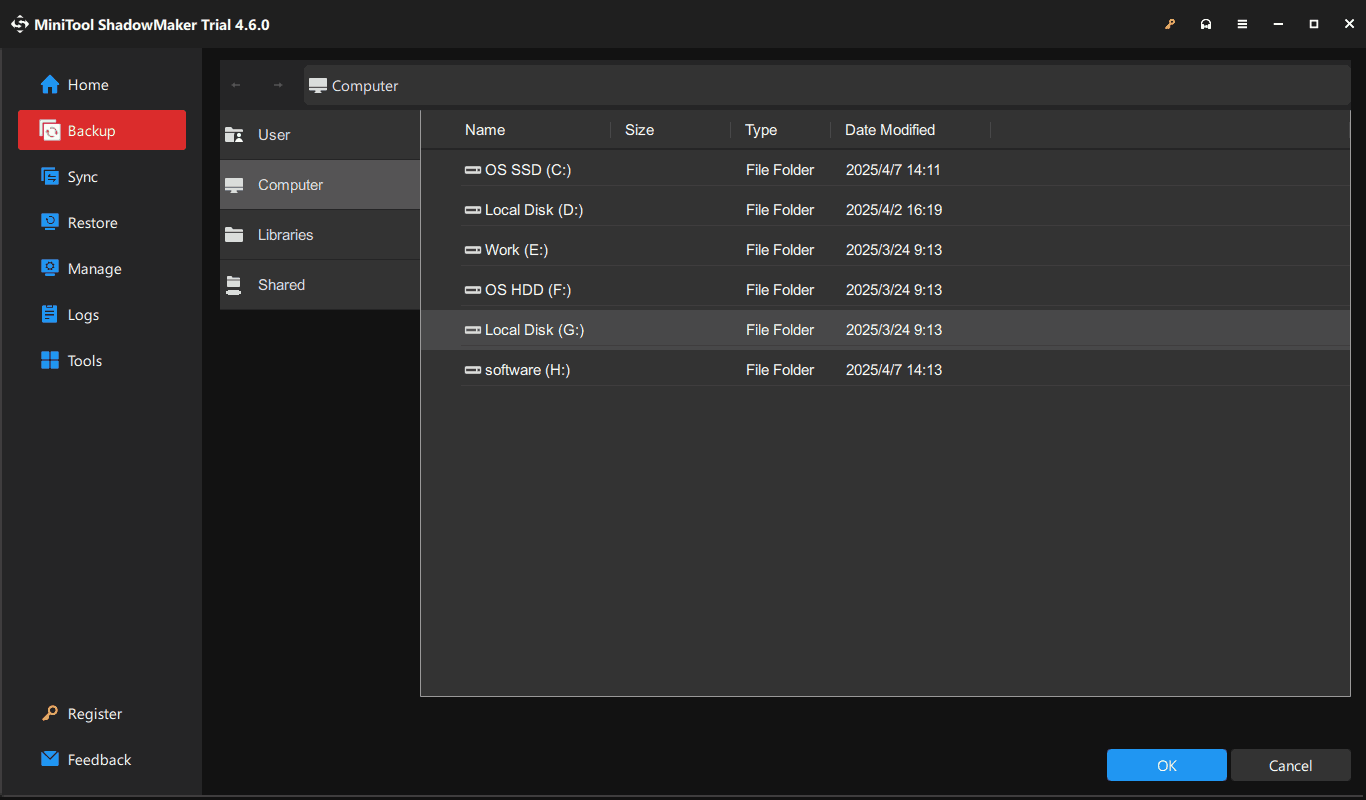
To back up documents, photos, and other files, click SOURCE > Folders and Files, browse your computer, choose the items you wish to back up, and click OK. Then, select the target drive.
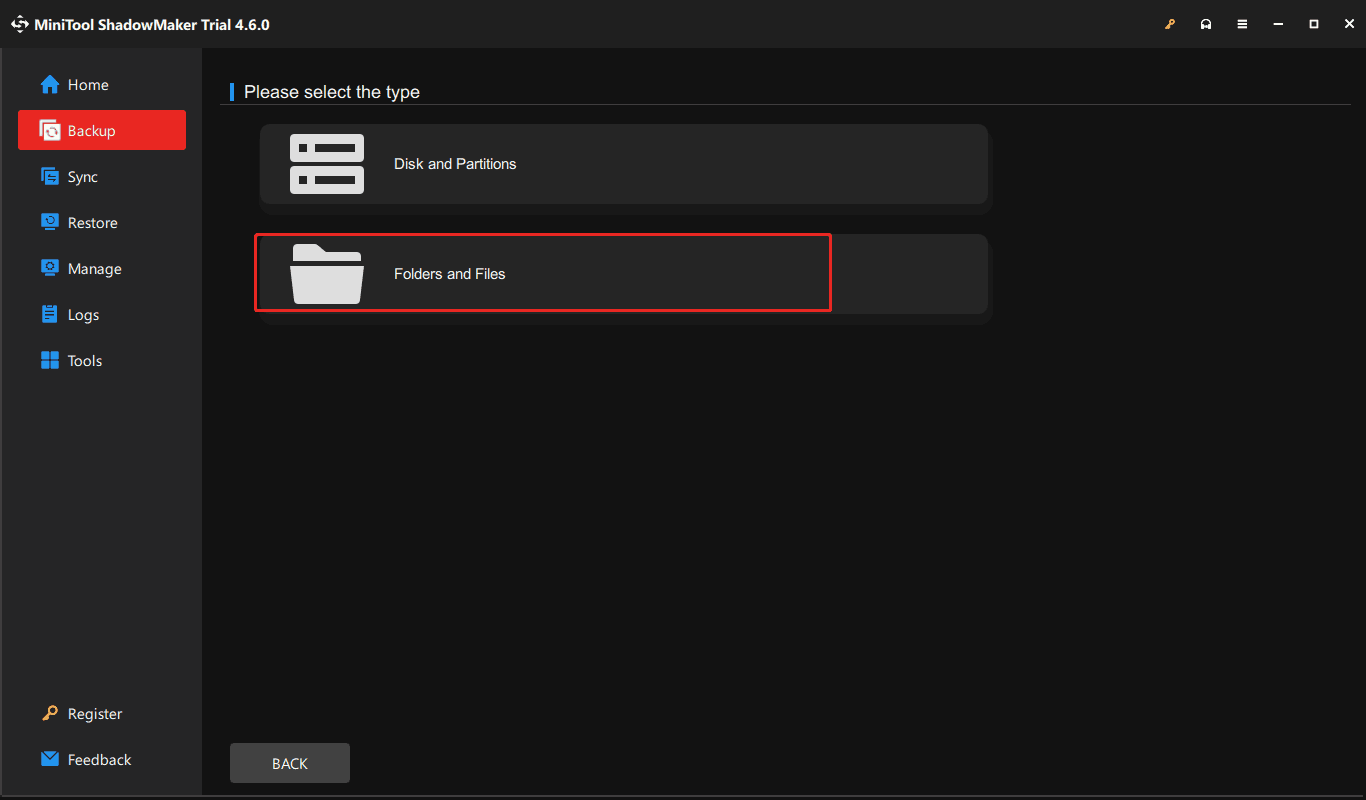
Step 4: To automatically back up your data, go to Options > Schedule Settings. Then, enable this option and schedule a plan such as Daily, Weekly, Monthly, or On Event.
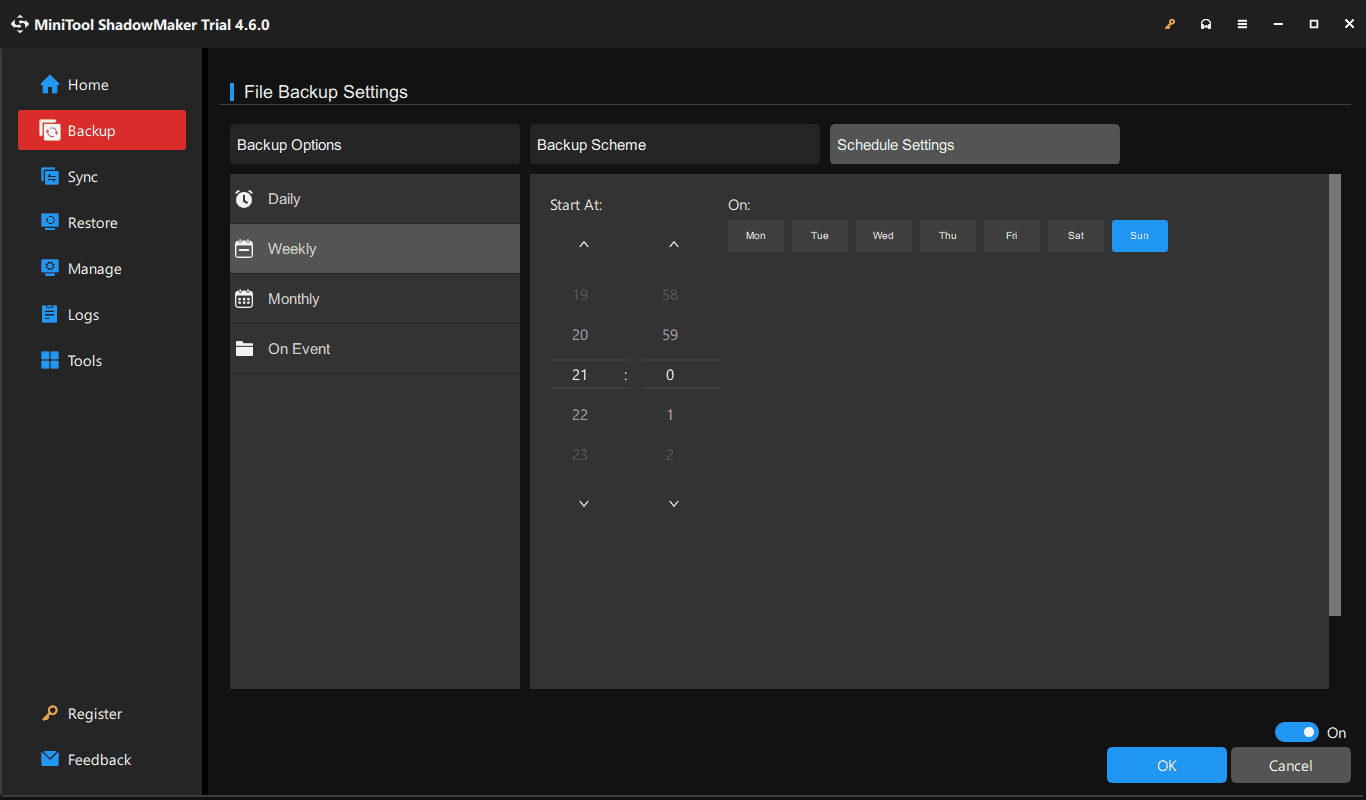
MiniTool ShadowMaker allows you to set up a backup scheme. When creating full, incremental, or differential backups, this backup software deletes old backup versions at the same time. Just navigate to Options > Backup Scheme, choose an option, and set the number of versions that you need to retain. In this manner, your disk space is managed well.

Step 5: Finally, click Back Up Now to make a full backup immediately. You can view the backup progress on the Manage page. Subsequently, MiniTool ShadowMaker will automatically back up your data at the configured time point. Also, it creates incremental or differential backups.

Cloud Backup Services
Aside from the local backup using MiniTool ShadowMaker, cloud backup is another popular way to protect data. By uploading files, documents, pictures, and videos to a cloud platform, you can access the data anytime and anywhere.
Usually, use a service from a reputable company, such as Microsoft OneDrive, Google Drive, Dropbox, IDrive, and more. Wonder about steps to back up your PC to the cloud? Learn more from the guide on How to Backup Computer to Cloud Drive.
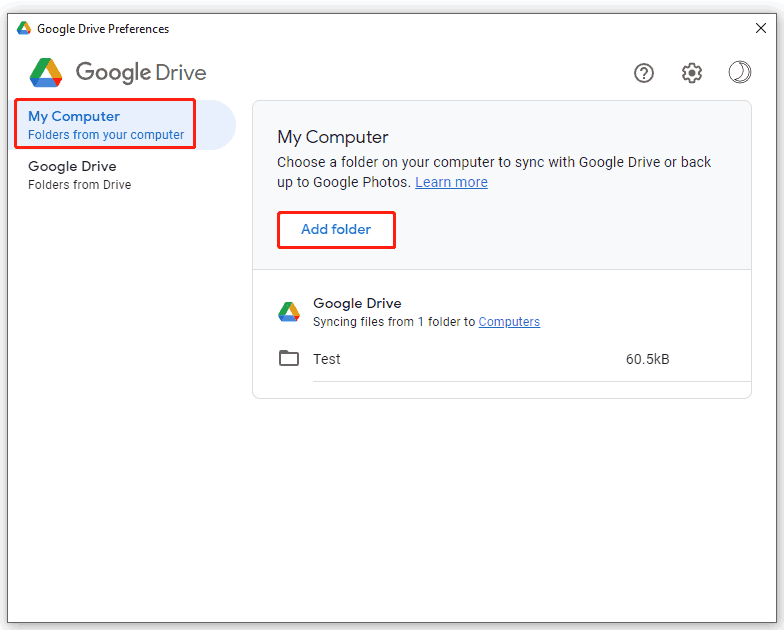
How to Ensure Backup Safety and Effective Data Recovery
To make sure backups are safe for successful recovery, here are some steps you can take.
Encrypt Data Backup
Encryption is vital to protect data, and backups are no exception. Backup encryption adds another layer of security against various threats. Even if the backups are compromised, the data remains protected. Only persons with the decryption keys can access the data.
How to encrypt your data backups? The professional backup software, MiniTool ShadowMaker supports password protection for your backups. It supports AES128 data encryption.
MiniTool ShadowMaker TrialClick to Download100%Clean & Safe
For this task, go to the Backup page of MiniTool ShadowMaker and click Options > Backup Options > Password. Then, enable password protection, enter a password, confirm this password, select a data encryption option, and click OK. Next, begin the backup task, and this backup image file is encrypted.
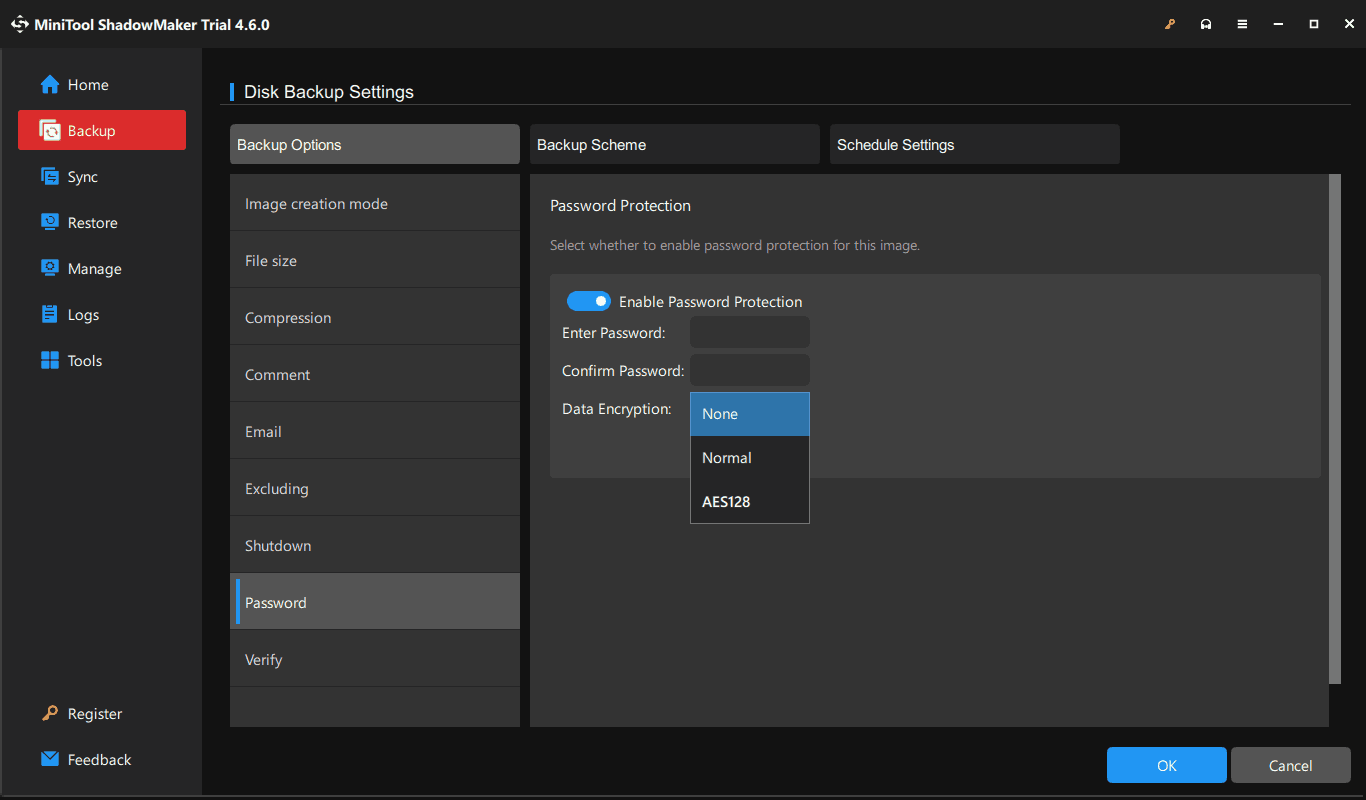
Check Backup Data Consistency
When backing up data, you are sure that it is possible to restore your data. But this is not always the case. The backup data may be corrupted. Checking the consistency of backup data helps ensure recoverability and avoid data loss.
The consistency check refers to a technique that finds any discrepancies in the backups and notifies you. Then, you will take further action to solve possible issues.
Test Backup and Recovery
A backup and recovery test is the process of evaluating the effectiveness of the data backup and recovery method of an organization. The main purpose is to reduce downtime and data loss, meanwhile, ensure business continuity.
The procedure involves confirming the backup data’s integrity, checking the recovery methods, and assessing the backup and recovery infrastructure’s overall performance.
The staff simulate various disaster situations during a test. This helps determine whether the backup systems are running properly and if the source data can be restored precisely.
Future Backup Trends
Overall Popularization of Cloud Backup
The cloud backup is becoming the norm with the extensive use of cloud computing. Because of its scalability, cost-effectiveness, and flexibility, it is a core solution for enterprise data protection. Via cross-region disaster recovery and hybrid cloud deployment, businesses will protect their data well.
Object Storage
Object storage, also known as object-based storage or blob storage, refers to a computer data storage method. It is designed to handle large amounts of unstructured data in units called objects. Typically, each object involves a variable amount of metadata and a globally unique identifier.
Object storage can be performed at multiple levels, including the device level, system level, and interface level. Photos, videos, audio files, emails, and any other type of unstructured data can be objects.
Some public cloud services employ object storage, such as Amazon Web Services, Microsoft Azure, Alibaba Cloud, Google Cloud,etc. Learn more about object storage.
AI Use in Backup
AI, short for Artificial Intelligence, is making data backup more intelligent and efficient. AI can automate backup and restoration processes & optimize backup schedules and storage processes. What’s more, it monitors backup data integrity in real time and identifies potential risks.
Besides, it verifies the validity of the recovery solution by simulating attacks and improves disaster recovery reliability. Through automatic classifications (such as time, content labels, etc.) and automated backups, backup and recovery processes become simple.
In the future, AI will realize local data preprocessing and real-time backup, and reduce cloud load & transmission delay. The combination of AI and quantum encryption technology will improve the tamper-proof ability of backup data and prevent new cyberattacks.
Bottom Line
That’s all the information on full vs incremental vs differential backup. This comprehensive guide covers these 3 backup types, including their backup principles, pros & cons, applicable scenes, and detailed comparisons. After a deep analysis, choose the best backup strategy as per your needs.
Moreover, backup software such as MiniTool ShadowMaker and cloud backup services are introduced. Besides, some other backup essentials can be found here.
Now, take action to back up your data, whether you are an individual or a business. Prevention is better than cure!

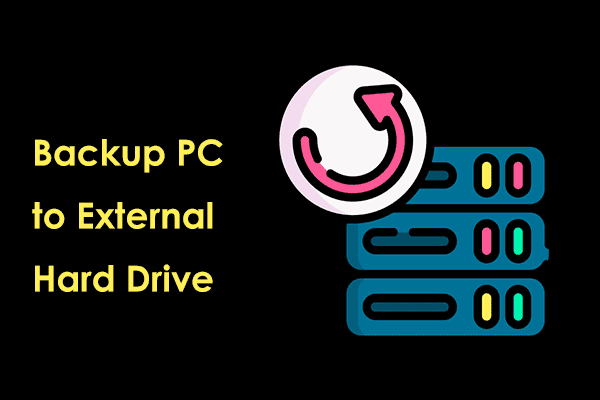

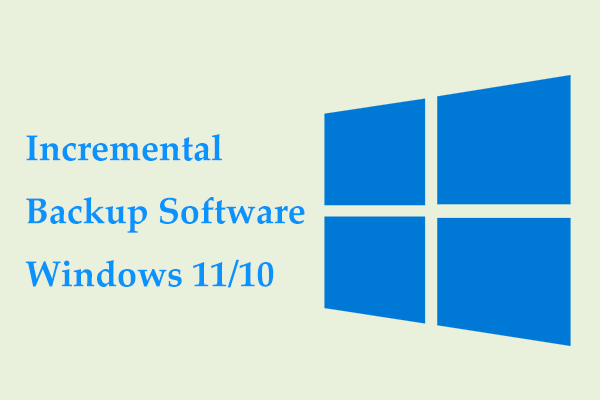
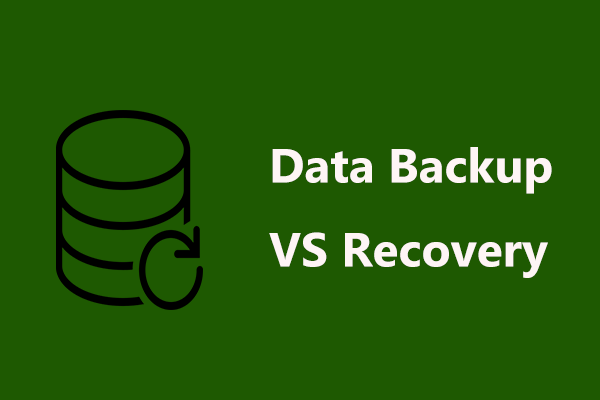


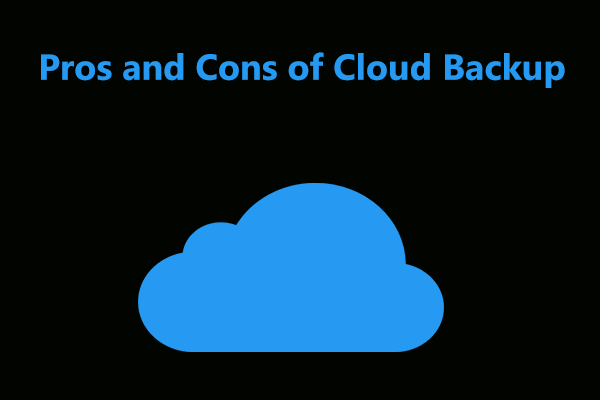
User Comments :